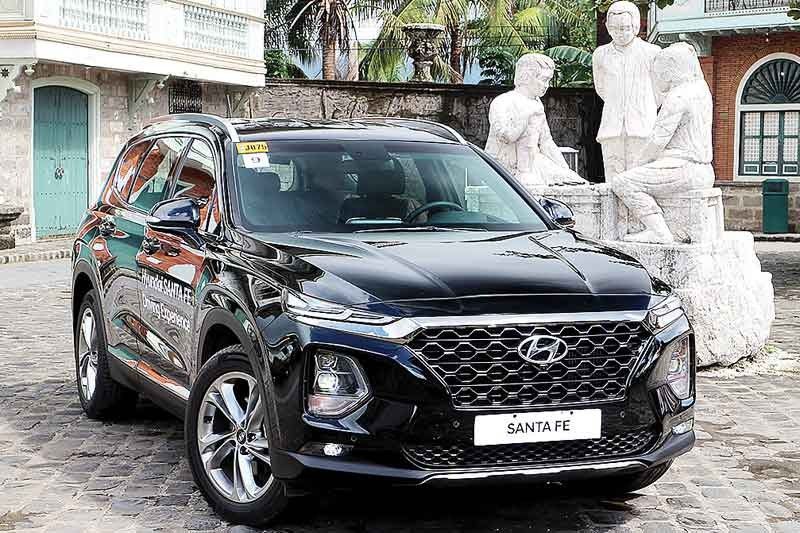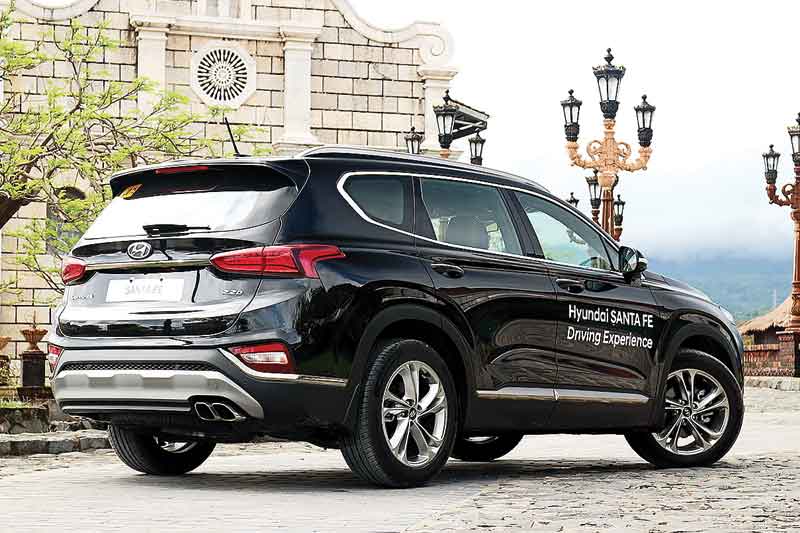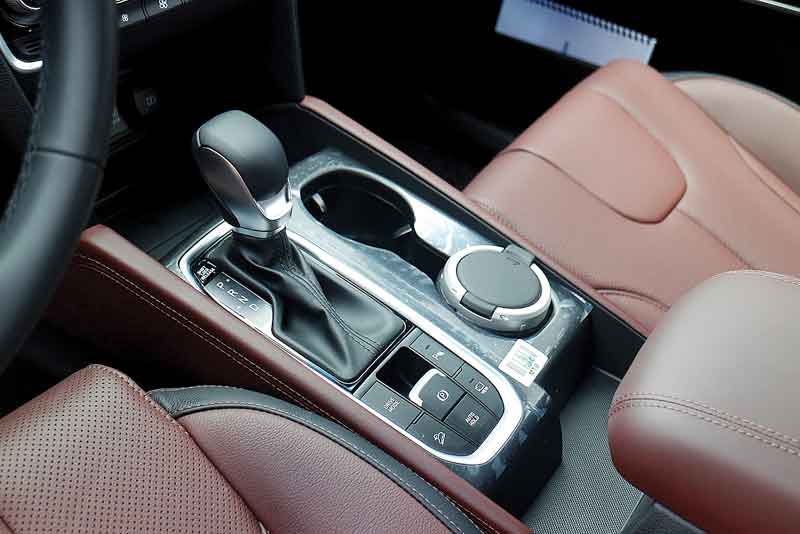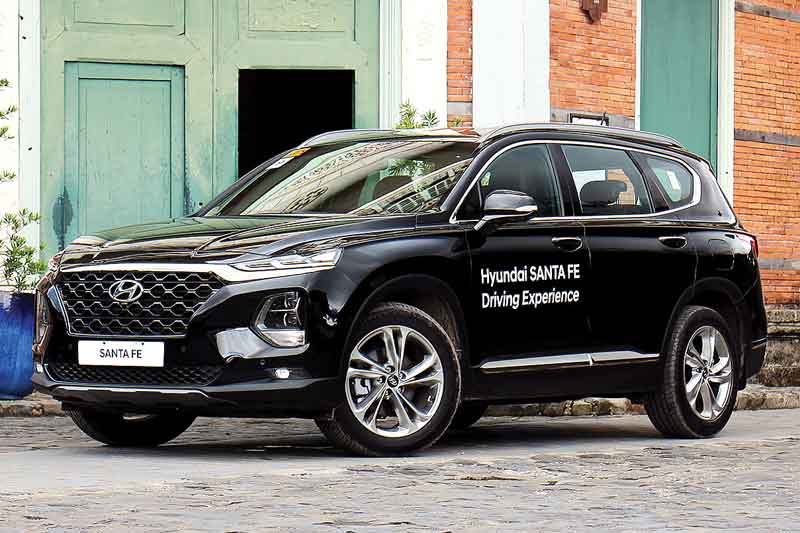2019 Hyundai Santa Fe: Upmarket upbringing

Hyundai is ambitious to say the least. Instead of going against the plebian Pickup-based Passenger Vehicle or PPV market, the 2019 Santa Fe is aiming squarely for the midsized luxury SUV crowd. It’s a move that may seem mad, but considering that there are far less competitors in this segment, the added breathing room has given Hyundai the chance to create an SUV that can wow the world. It’s certainly a chance they haven’t squandered, giving birth to the fourth-generation Santa Fe — an SUV that successfully shifts the balance of power squarely in favor of Hyundai.
Styling may be subjective, but there’s no doubt that it gives the Santa Fe far more credence. The front and rear ends are far more upright, lending an unmistakably strong, tall stance. The fascia, with its chainmail-patterned grille and slim lighting units (they’re daytime running lights) make it look sinewy and menacing. The LED headlights (with active bending function) and signal lights have been split, pushed lower toward the bottom edge of the grille — something Hyundai opted to repeat at the back with the brake lights on top, and the signal lights and reverse lights at the bottom.

Dimensionally, the 2019 Santa Fe is longer, wider, and taller than its predecessor. Crucially, the wheelbase is longer by 66 mm, giving it more interior room than ever. Hyundai says passenger volume is up three percent, and while that may seem like a miniscule number on paper; in practice, they’ve certainly put all that percentage to good use. In particular, the third-row seat isn’t just habitable, but genuinely comfortable. Of course, to get that added headroom, something’s got to give. In this case, there are no ceiling-mounted air vents here. Instead, cool air is blown through outlets located at the center console for the second row and side panels for the third row.
Inside, the Santa Fe impresses with its dash design. The horizontal layout, coupled with the nicely sculpted surfaces offer an airy, luxurious feel. Worthy of praise is Hyundai’s decision to fit a two-tone black-and-brown leather for the Philippine-spec model. Not only does it successfully cut the boredom associated with an all-black scheme, but it does so with class. It also serves to highlight the plush plastics and nicely damped switchgear. There’s an obsessive level of detail here as well as even the mundane headliner is now covered in a suede-like finish. Still, given how much attention Hyundai’s poured to getting the cabin right, there are still some odd smattering of budget-minded plastics, particularly on the door panels.

Typically chastised for their stingy equipment, Hyundai has finally gotten the Santa Fe right straight out of the box this time. Aside from the leather seats with power adjustment and cooling function for the first row, it’s got a head-up display, dual-zone climate control, seven-inch touchscreen infotainment system that incorporates both Apple CarPlay and Android Auto, Qi wireless charger, rain-sensing wipers, power tailgate, six SRS airbags, stability control, front and rear proximity sensors, and even a 360-degree camera.
In terms of drivetrain, the fourth-generation Santa Fe comes in just one variant: a front-wheel drive model equipped with Hyundai’s venerable 2.2-liter R CRDi e-VGT engine. With 200hp and 442 Nm of torque on tap, it’s by no means short on power. Whenever the tachometer reaches 2,000 rpm, the surge comes in, and comes in strong. There’s certainly a lot of usable power, and this is quite beneficial especially when overtaking on tight, twisty mountain roads. More than just raw power though, what’s even more surprising is the drivetrain’s high level of refinement. There’s still a hint of diesel clatter at higher revs, but even then, it’s smooth enough to pass the ear of even the pickiest passenger.

New for 2019 is the eight-speed automatic. Enthusiasts may decry the lack of paddle shifters, but they’re unneeded here. Offering quick, transparent shifts, it prefers to work seamlessly in the background, letting the engine do all the talking. Yet, the wider spread of gears makes itself known at the fuel pump: 13.2 km/L despite a hard days’ worth of driving.
On the road, the Santa Fe is an assuring drive because of its stability and surefootedness. Hyundai’s changeable driving modes is still here, but aside from just tweaking the steering effort (ala Flex Steer), this one remaps the throttle and transmission response. Whatever the mode though, it doesn’t go full-blown sporty, preferring instead for a package that simply works. Keeping things in “Comfort” or “Smart” modes, it obliges with its precise, nicely weighted steering and controlled movements. What’s more, the ride is extremely comfortable, and the cabin remarkably quiet.

Some Santa Fe buyers may be put off by its P 2.338-million repositioning, yet, it can’t be faulted for what it’s achieved especially after a day behind the wheel. Not only has the 2019 Hyundai Santa Fe managed to combine a memorable-looking exterior package with a well-finished and nicely appointed interior, but it’s done so with a convincing powertrain and suspension package. As such, it’s managed to shake off its confused identity by embracing a truly premium mindset. In doing so, it not only manages to fire a shot across the bow of its main competitors, the Mazda CX-9 and Ford Explorer, but it’s managed to score a direct hit.

- Latest






























